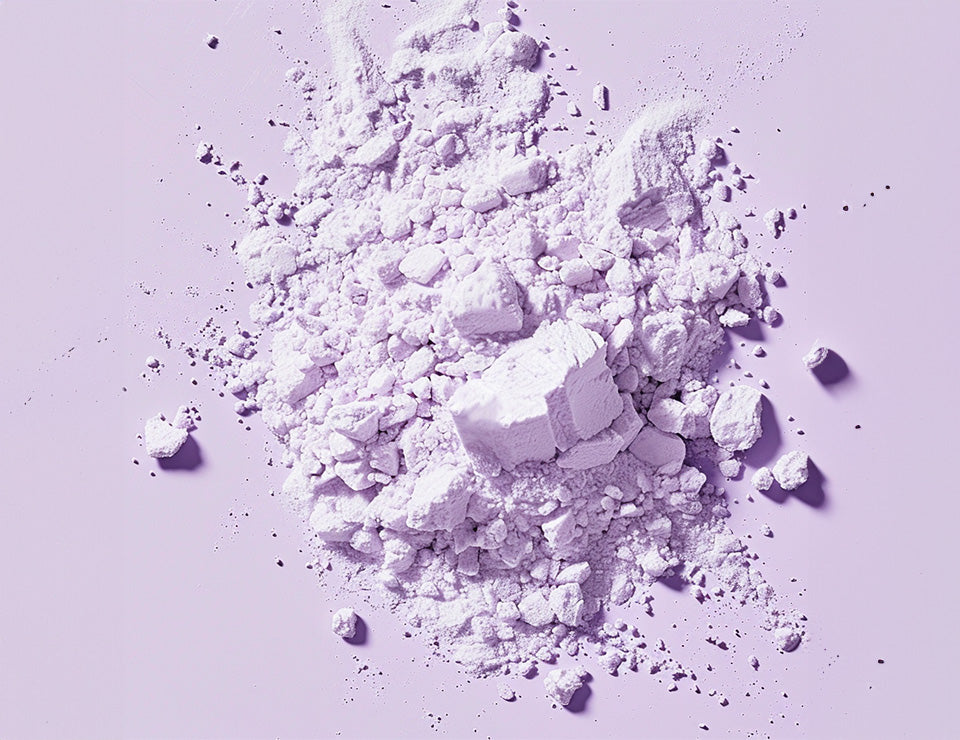At a glance
- Source: Mainly extracted from chamomile, but can also be synthetically produced.
- Effects: Anti-inflammatory, soothing, and antimicrobial.
- Ideal for: Sensitive skin, rosacea, acne-prone skin, and hyperpigmentation.
- Interesting Fact: Acts as a penetration enhancer for poorly penetrating substances.
Effects of Bisabolol
Bisabolol is renowned for its diverse benefits in skincare. Here is a closer look at its main effects:- Anti-inflammatory Effect: Bisabolol reduces inflammation by inhibiting the activity of enzymes and mediators involved in the inflammatory response. A study published in Current Pharmaceutical Biotechnology confirmed that Bisabolol effectively reduces inflammation and calms the skin, making it particularly recommended for inflammatory skin conditions such as acne, rosacea, psoriasis, and dermatitis.
- Soothing Effect: One of the most outstanding benefits of Bisabolol is its ability to soothe the skin and relieve irritation. This effect is due to Bisabolol's capacity to inhibit the production of pro-inflammatory cytokines like Interleukin-6 (IL-6) and Tumor Necrosis Factor-α (TNF-α). A study by Maurya et al. (2014) demonstrated that Bisabolol significantly reduces the production of these cytokines, alleviating irritation.
- Antibacterial and Antifungal Properties: Bisabolol works antimicrobial by destabilizing the cell membranes of bacteria and fungi, disrupting their normal barrier function. A study in Naunyn-Schmiedeberg's Archives of Pharmacology showed that Bisabolol compromises the integrity of microbial cell membranes, facilitating the entry of antibiotics and making microorganisms more susceptible to antibacterial and antifungal agents. This can be useful in treating acne and preventing infections.
- Brightens Dark Spots: Bisabolol reduces hyperpigmentation by inhibiting melanin production. It blocks the α-Melanocyte-Stimulating Hormone (α-MSH) and its signaling pathway responsible for melanin production. A study in the International Journal of Cosmetic Science showed that Bisabolol, by inhibiting CREB phosphorylation induced by protein kinase A, reduces the activity of melanogenic enzymes, thereby decreasing melanin synthesis.
How to use it
- Frequency: It can be used daily, both morning and evening.
- Concentration: Studies show that Bisabolol is effective at concentrations ranging from 0.2% to 1%.
- Combination with Other Ingredients: Bisabolol can be easily combined with other active ingredients. It is particularly recommended to combine it with other soothing agents.
Is Bisabolol Harmful?
Bisabolol is generally considered safe for most people. However, individuals with allergies to chamomile or other plants in the Asteraceae family should perform a patch test before using products containing Bisabolol. The Cosmetic Ingredient Review (CIR) Panel has deemed Bisabolol safe in concentrations up to 1% in leave-on formulations.
Improved penetration of active ingredients
Bisabolol, especially (-)-α-Bisabolol, acts as an effective penetration enhancer by altering the structure and integrity of the skin barrier, thereby increasing the permeability for other active ingredients. This effect is based on several mechanisms affecting the lipid matrix of the stratum corneum, the outermost layer of the skin.
It interacts with the lipids in the stratum corneum, disrupting the ordered structure of the lipid lamellae. This destabilization increases the fluidity of the lipid barrier, facilitating the diffusion of active ingredients. The lipid lamellae in the stratum corneum consist mainly of ceramides, free fatty acids, and cholesterol, forming a dense barrier. Bisabolol can break this structure by incorporating into the lipid layers. A study by Cornwell and Barry (1994) analyzed the effect of Bisabolol on the penetration of the hydrophilic agent 5-Fluorouracil. The results showed that Bisabolol significantly increased skin permeability by affecting the lipid structure in the stratum corneum, facilitating the penetration of 5-Fluorouracil through improved fluidity and reduced density of the lipid lamellae.
Interestingly, Bisabolol also reduces transepidermal water loss (TEWL), suggesting that it modifies the barrier function without completely destroying it, thus improving penetration without damaging the skin. It increases the penetration of both hydrophilic and lipophilic substances by fluidizing the intercellular lipid lamellae and loosening the tight packing of lipid molecules. This facilitates the diffusion path for various molecules through the skin. Another comprehensive analysis of the mechanisms of penetration enhancers, including Bisabolol, confirmed that it improves the penetration of active ingredients by destabilizing the lipid lamellae and increasing lipid fluidity (Barry, 2004).
References
- Maurya AK, Singh M, Dubey V, Srivastava S, Luqman S, Bawankule DU. α-(-)-bisabolol reduces pro-inflammatory cytokine production and ameliorates skin inflammation. Curr Pharm Biotechnol. 2014;15(2):173-81. doi: 10.2174/1389201015666140528152946. PMID: 24894548..
- Rocha NF, Rios ER, Carvalho AM, Cerqueira GS, Lopes Ade A, Leal LK, Dias ML, de Sousa DP, de Sousa FC. Anti-nociceptive and anti-inflammatory activities of (-)-α-bisabolol in rodents. Naunyn Schmiedebergs Arch Pharmacol. 2011 Dec;384(6):525-33. doi: 10.1007/s00210-011-0679-x. Epub 2011 Aug 26. PMID: 21870032.
- Cavalieri E, Bergamini C, Mariotto S, Leoni S, Perbellini L, Darra E, Suzuki H, Fato R, Lenaz G. Involvement of mitochondrial permeability transition pore opening in alpha-bisabolol induced apoptosis. FEBS J. 2009 Aug;276(15):3990-4000. doi: 10.1111/j.1742-4658.2009.07108.x. Epub 2009 Jun 29. PMID: 19570051.
- Lee J, Jun H, Jung E, Ha J, Park D. Whitening effect of alpha-bisabolol in Asian women subjects. Int J Cosmet Sci. 2010 Aug;32(4):299-303. doi: 10.1111/j.1468-2494.2010.00560.x. PMID: 20642768.
- Alves Ade M, Gonçalves JC, Cruz JS, Araújo DA. Evaluation of the sesquiterpene (-)-alpha-bisabolol as a novel peripheral nervous blocker. Neurosci Lett. 2010 Mar 12;472(1):11-5. doi: 10.1016/j.neulet.2010.01.042. Epub 2010 Jan 25. PMID: 20105451.
- Fiume, MM. Safety Assessment of Bisabolol as Used in Cosmetics. Cosmetic Ingredient Review. 2015 Feb 20; Re-Review for Panel Review, Panel Meeting Date: 2015 Mar 17-18.
- Cornwell PA, Barry BW. Sesquiterpene components of volatile oils as skin penetration enhancers for the hydrophilic permeant 5-fluorouracil. J Pharm Pharmacol. 1994 Apr;46(4):261-9. doi: 10.1111/j.2042-7158.1994.tb03791.x. PMID: 8051608.
- Barry BW. Breaching the skin's barrier to drugs. Nat Biotechnol. 2004 Feb;22(2):165-7. doi: 10.1038/nbt0204-165. PMID: 14755286.









